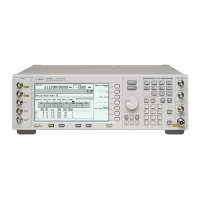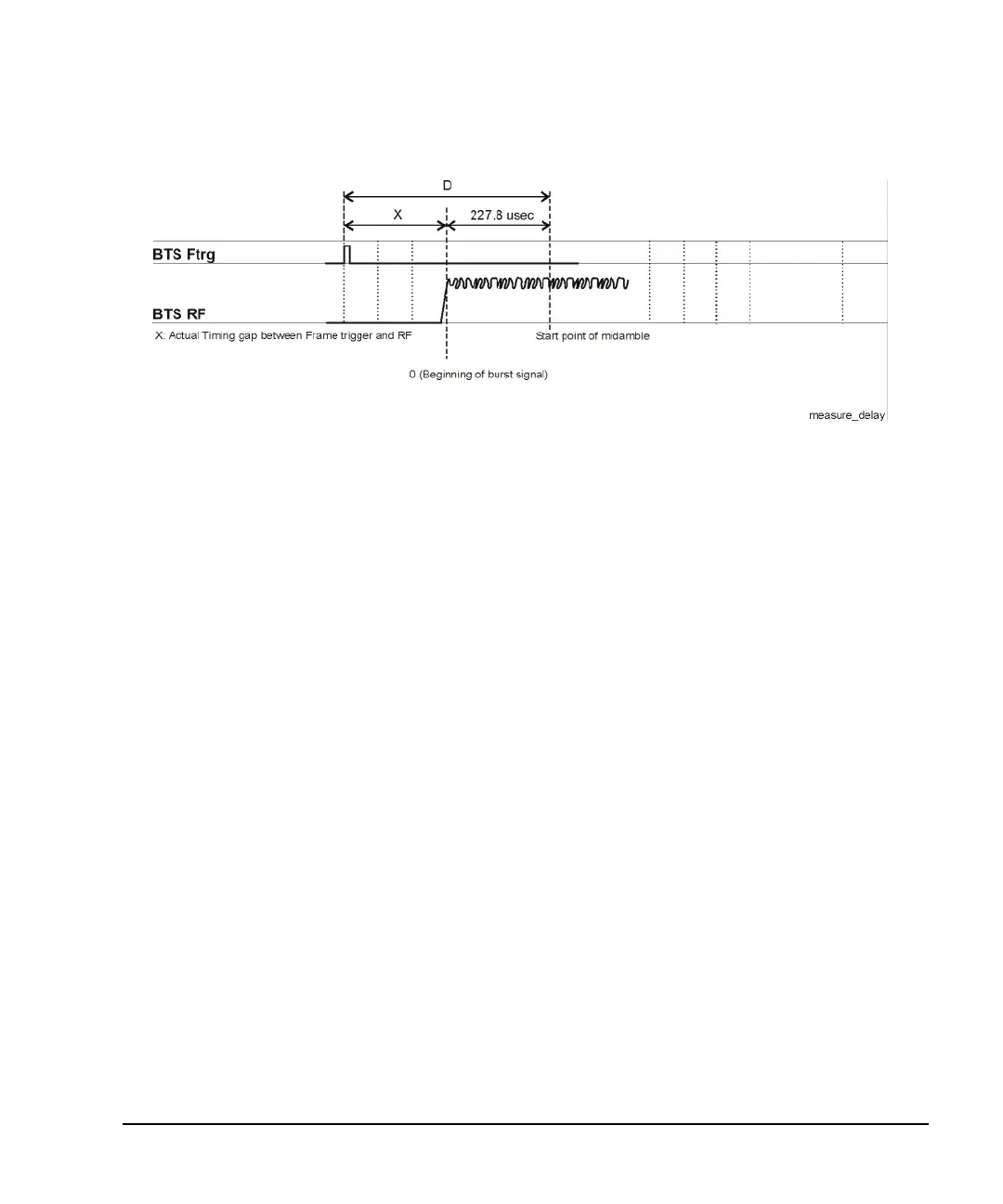Chapter 9 285
BERT
Using the External Frame Trigger Function with the EDGE Format
Figure 9-16
8. Calculate the offset value X using the following equation:
Where, in the EDGE mode, 3.693 µs is equal to 1 symbol.
Adjusting the Delay Value
1. Configure the ESG, BTS, and VSA setup. Refer to Figure 9-17 on page 286.
Xsymbols()D 227.8–()3.693⁄=

